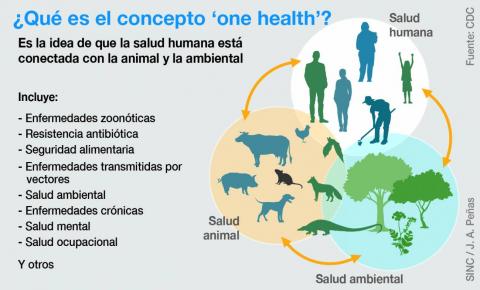A study carried out in China has analyzed tissues from 461 fur animals, mostly farm-raised. They found 125 virus species, 39 of which presented a high risk of interspecies transmission. According to the authors, who publish the results in the journal Nature, “there is a need for more extensive and regular surveillance to assess the public health risks that could result from fur animal farming”.

Viones chinos - Gustavo del Real
Gustavo del Real
Researcher at the Center for Research on Influenza Pathogenesis and Transmission (CRIPT) at the Icahn School of Medicine at Mount Sinai, New York, USA and researcher at the National Institute for Agrarian and Food Research and Technology (INIA-CSIC)
The past coronavirus pandemic and recent latent threats from other zoonoses, such as avian influenza and monkeypox, have spurred research into viruses present in animals, both domestic and wild, that could be transmitted to humans and cause new pandemics. Farm animals may be a bridge for the transmission of viruses present in wildlife to humans.
This work shows that mammalian species used in the fur industry can be reservoirs for a wide variety of zoonotic viruses. This is an exhaustive metagenomic study carried out in China, the world's largest producer of mammalian fur, on the three main fur species: mink, fox and raccoon dog. They also analyzed farm animals of 24 species for meat consumption. Surprisingly, they identified 125 distinct viruses (101 from 16 RNA virus families and 24 from 4 DNA virus families). Most of the fur species contained between 2 and 23 virus species. Mink contained 23 virus types from 14 different families, while in the raccoon dog they found 19 viruses from 14 families and in the guinea pig, 20 viruses from 11 families. Additionally, simultaneous infections with more than one virus were detected in these three fur species.
Most of the viruses identified were closely related to viruses found circulating in the animals, although divergent virus variants were also found, as well as 36 previously undescribed virus species. Among the viruses identified are multiple viruses associated with human infections, hepatitis E, Japanese encephalitis virus, reovirus, norovirus and rotavirus. The finding of 7 species of coronavirus stands out, some of canine, rat and bat origin. They also found influenza viruses of human and swine origin with evidence of recombination events between them. In summary, they have identified 39 viruses at high risk of transmission to other species, including 11 viruses potentially transmissible to humans.
The data published in this paper reveal three facts:
- Fur species, especially some of them, such as mink, fox and guinea pig, are quite susceptible to infection by multiple viruses, both respiratory and enteric tropic;
- Frequent transmission of multiple viruses occurs between farm and wild animal species;
- The hyper-intensive farming methods typical of fur animals facilitate virus infection, evolution and transmission: high density of animals, tens of thousands confined in adjacent cages, highly stressful conditions (immunosuppression), poor hygiene, insufficient biosecurity measures that facilitate contact with humans and other domestic and wild animals.
The study provides valuable information for designing and implementing preventive measures to avoid the emergence of new pathogenic viruses in humans and animals and the appearance of future pandemics. In many countries, including Spain, health control measures on fur farms are insufficient, although after the recent outbreaks of SARS-CoV-2 and H5N1 avian influenza in mink farms in our country, surveillance has been increased. In other countries, such as the Netherlands, mink farms have been permanently closed for the same reason. Although fur farms are present in many countries around the world, with China as the main producer, their presence is declining, especially in European countries where the industry is not very popular.
- Research article
- Peer reviewed
- Observational study
Zhao et al.
- Research article
- Peer reviewed
- Observational study



